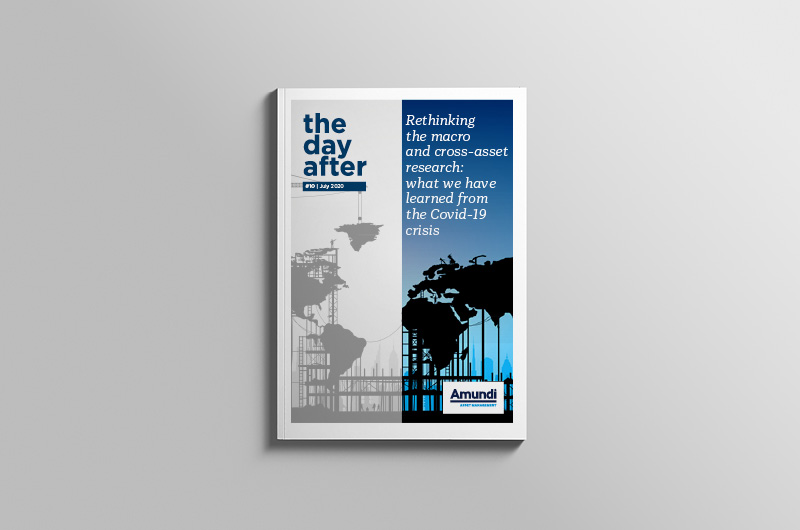Seven Lessons After Seven Years of Building Robos in Asia
Lesson #1: Robo is about the customer experience
Let’s face it: most people find wealth management mysterious, tedious and something best done some other day. So, a key factor in making a robo-investment platform successful is getting the customer experience right. But this goes beyond a simple and delightful “UI/UX” (user interface/user experience) design and a fully online journey starting with onboarding. It’s about getting some of the more esoteric and seemingly less relevant decisions right. How does the platform support small investment amounts? How does it behave when a customer does a top-up or a withdrawal while other transactions are still pending? How does it encourage customers to rebalance their portfolios when the investment recommendations change? We have learnt that these questions have a huge impact on what customers think of the platform and whether they are likely to add more funds to it or recommend it to friends.
Lesson #2: Know the business
Robo is a new distribution channel for an age-old service. Market participants are still figuring out what’s the right product proposition for a particular target customer and regulatory environment. No one has all the answers yet. So don’t just be a vendor to your client – treat them like a partner. Robo is more than a tech platform – it’s a new business. And clients need your expertise in all matters – tech, UI/UX, investment products, the commercial model, regulation, customer conversion. Understand your client’s business objectives and constraints, share your regulatory experience and lessons from other propositions and markets. Don’t just show up to meetings to gather requirements. Instead, challenge your clients’ thinking, learn from them and work with them to solve the next set of problems. At Quantifeed, we push the boundary of digital wealth management together with our clients.
Lesson #3: Get your delivery right
If regulatory risk is the biggest risk that a client does not want to take, close behind it is project risk. It’s critical to deliver high-quality code to your clients on-time and on-budget. This is true for all enterprise SaaS (software-as-a-service) vendors. But in wealth management, launch schedules are tight and competition strong. Products, proposals, and pitches are all for nothing if you don’t get this one right. Make sure you have great project and product management teams, an awesome culture of testing code (preferably by automating as many tests as possible) before deploying to a client’s environments, and a skilled on-premises team. Quantifeed customer crews write feature files in Gherkin (a domain-specific language). And we keep practising. We believe that nothing speaks more to our ability to deliver than our track record.
Lesson #4: Decide where you play
Everyone needs digital wealth management! I am not just talking about investors but also financial (and some non-financial) intermediaries all over Asia. That’s a massive opportunity if you’re a digital wealth management platform provider to other businesses. The problem is that not all clients want the same things, delivered and supported the same way, or priced at the same level. Be extremely deliberate on whether and how you target a market or client segment. Aim to be the best in one market or segment before moving to others. We started off with a standard cloud offering for online brokers in our early days – that strategy helped us strengthen our product and credentials – and then we moved to service Tier 1 consumer banks with highly customised enterprise deployments.
Lesson #5: Think big, start small, learn fast
Speak to any clients, you will hear that they want the platform launched quickly. Time-to-market is crucial – no one wants to wait a year to have a MVP (minimum viable product). That’s why an agile and customer-focused development process is important. First, start small and focused. Pick a single investment application or journey and launch a simple but consistent offering quickly. Second, build upon the first journey. Once launched, feedback from customers and key stakeholders acts as a guide to expand and modify the existing journey, and to launch additional, entirely new journeys.
Lesson #6: Quantifeed starts with quant
Technology brings a new proposition to life. It enables a distributor to automate and scale its wealth management business across thousands of customers. To do this well, you need to solve problems that are on the edge of quantitative finance and technology. How do you determine the best personalised portfolio for a retiree wishing to maximise their consumption without depleting their wealth? How do you scan thousands of customer portfolios to find out which ones are no longer aligned with the recommendation? How do you calculate trading orders to rebalance fund portfolios without any risk of overdrawing the customer’s bank account? To answer these questions – and code-up the solutions – you need to be more than a software engineer, you need to be financial engineer. At Quantifeed we don’t have a quant team – we have quants in every team, from engineering, product and delivery, even sales.
Lesson #7: Focussed innovation
Innovation is necessary but it needs to be focussed and deliberate. If you attempt to do everything, you will end up doing nothing well. You need to say ‘no’ – or at least ‘not now’ – to many opportunities. Focus on the ones that get you closer to your vision, your clients and partners, and your financial targets. Weigh every opportunity in terms of its potential returns and the effort involved in building, distributing, and supporting it.









